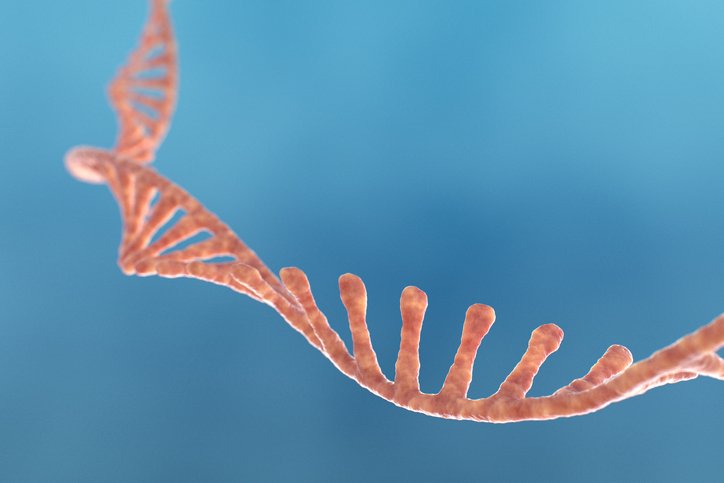Different cell types typically express unique genes to help them differentiate into their assigned roles—skin cells express genes for skin while liver cells express genes for liver and so on. However, in a new study, scientists at University of Chicago (UChicago) and their collaborators elsewhere show that in certain circumstances, some cells can “shake up” regions of their genomes to express genes active in other cell types. This flexibility is important for tissue repair and training the immune system and can also be exploited for tumor development, according to Andrew Koh, PhD, assistant professor of pathology at UChicago and senior author of the study. That’s why his team wanted to investigate how these cells “are able to change their fates.”
Their work is published in Nature in a paper titled “Thymic epithelial cells amplify epigenetic noise to promote immune tolerance.” In it, the scientists suggest that randomness or variability in the way DNA is packaged can create a kind of “epigenetic noise” that enables cells to take on different identities. The study focused on medullary thymic epithelial cells (mTECs), which are found in the thymus. They are one of the few cell types in the body that can both express a wide variety of genes and alter their identity to mirror cell types from other tissues making them the perfect test case. These cells help train the immune system to prevent autoimmunity by presenting proteins normally expressed in specialized tissues and organs to T cells developing in the thymus. T cells that react too strongly to molecules from the body’s own cells are purged so that they do not trigger an autoimmune response down the road.
With mTECs, “each individual cell does not express the entire genome. Instead, they express only a unique subset of the tissue-specific genes at any given snapshot,” Koh said. “There’s a great deal of heterogeneity, so we thought that it was really important to look cell-by-cell to uncover the mechanisms that allow the activation of each subset of tissue-specific genes.”
Using techniques from single cell sequencing, the scientists analyzed gene expression patterns and chromatin structure in individual mTECs. Their analysis did not indicate a link between peak levels of chromatin accessibility and the expression of tissue-specific genes. Instead, they observed a lot of accessibility “noise” that gave cells the potential to activate genes that are solely expressed in other specialized tissues. This expression helped train T cells to discriminate between self and non-self.
“Chromatin is usually tightly regulated to sequester regions that encode other cell fates and focus accessibility for regions pertinent for the established cell identity,” said Noah Gamble, PhD, a recent graduate from the Koh lab and the study’s lead author. “In our context, we found the genomic regions that should be tightly packed are more labile or ‘jiggly’ allowing more opportunities for factors to access and activate genes specific to different cell types.”
Next, the scientists sought to understand how the chromatin noise they observed is amplified in cells. They found that mTECs repressed the activity of the tumor suppressor protein p53 prior to becoming noisy. Then when the scientists manipulated p53 so that its activity was enhanced in mTECs, they found that the chromatin became more stable and the epigenetic noise was turned down. In this environment, the mTECs could no longer activate tissue-specific genes and this ultimately resulted in the escape of self-reactive T cells from the thymus to cause multi-organ autoimmune disease.
These findings suggest that “thymic epithelial cells adopt deviant states that should normally trigger p53 activation and cell death. But because p53 is downregulated, the cells survive and facilitate this ectopic gene expression to promote self/non-self discrimination,” Koh explained.
Additional tests also point to a link between epigenetic noise and tumor development. Specifically, they found that epigenetic noise allowed lung cancer cells to sample more of the genome once p53 is deleted. And this activates programs specific to other tissues to develop into more aggressive, malignant states.
Future research studies could look at whether other cancer types exploit similar mechanisms for tumorigenesis. Additionally, the scientists plan to explore whether epigenetic noise is amplified for wound healing and tissue repair, and if it can be leveraged to reprogram cells in the context of cancer immunotherapy and autoimmune conditions.
“It makes sense that to empower an immune system that uses a random process to recognize virtually any entity in the universe, thymic epithelial cells amplify random noise in the genome to ensure the immune system is focused on pathogens and cancers and not its own tissues. It’s fighting fire with fire,” Gamble said. “The moral of the story is that sometimes the random background noise can be just as important as the signal.”
The post Epigenetic Noise Helps Cells Adopt New Identities to Train the Immune System appeared first on GEN – Genetic Engineering and Biotechnology News.



